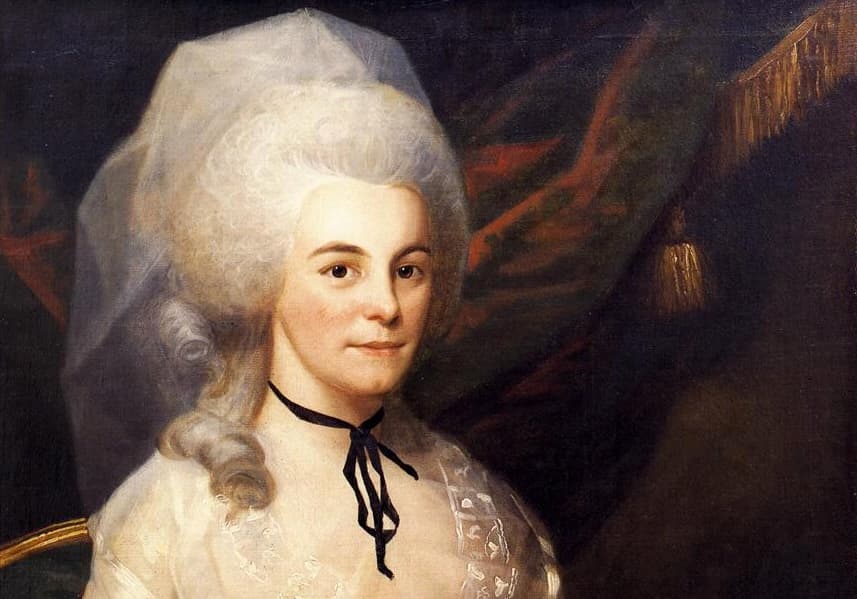The Schuylers and the Sisterhood of History
Amanda Vaill achieves what is for biographers a difficult balance between biography and history. If her work is not made into a major dramatic series, it will be a big surprise.

‘Pride and Pleasure: The Schuyler Sisters in an Age of Revolution’
By Amanda Vaill
Farrar, Straus and Giroux, 720 Pages
The Schuyler sisters — descendants of Hudson Valley Dutch grandees, as close to a landed aristocracy as the New World has ever seen, attended by slaves, always fashionably turned out — had it in their hearts, nevertheless, to welcome that parvenu Alexander Hamilton into their family, and to embark on the creation of a new nation that attacked the very idea of privilege in favor of republican virtue and democratic government.
Angelica, Elizabeth’s older sister, was the flashy one, eloping with an Englishman who lied about his bankrupt past and was referred to as a “mere businessman.” She nonetheless triumphed at Paris in a beau monde dalliance with a ladies’ man, Thomas Jefferson, and seems to have done so with Hamilton as well, writing letters that suggest she shared the love her sister had for him.
Amanda Vaill achieves what is for biographers a difficult balance between biography and history. She manages never to forsake a sense of the world in which these women operated, paying close attention to the details of their dress, for example, because how one appeared in society said so much about who one was and what one stood for.
In Ms. Vaill’s book, the brilliant but doomed Hamilton, whom Washington relied on implicitly for well over a decade, is a much put upon figure, a man of honor who died in a duel with a grudge-bearing Aaron Burr, who pinned his political failures on what he imagined to be Hamilton’s machinations — as did Jefferson and his acolytes, who tried repeatedly to prove the Treasury secretary profited from high office as well as indulging in an affair, which he publicly admitted.
Elizabeth overcame her shock at her husband’s infidelity and after his death did all in her power to rehabilitate his reputation and to secure his fame by commissioning a biography and ensuring the survival of his papers that she wanted Congress to purchase. Elizabeth, called Eliza by friends and family, spent decades not only defending Hamilton but proving herself to be a capable administrator of various institutions for the care and education of orphans.
In Ms. Vaill’s telling, it is hard not to feel outrage over how men treated Eliza, a woman more robust, courageous, and redoubtable than any of them proved to be. Biographer after biographer failed her, unable to do the hard work of research and writing that any major biography calls for, as Ms. Vaill’s own superb investigations and fluent prose style exemplify.
Even Eliza’s son, writing his father’s biography, did not have her understanding that only candor would do, though he was forced to confront a Washington relative when Hamilton’s papers proved he had authored Washington’s farewell address. That Hamilton was, in effect, speaking Washington’s mind was not enough for his descendants or for many biographers and historians who did not want to admit that Washington had any help. They wanted to perpetuate the fiction that he alone could fix it — whatever “the” it happened to be.
So the son goes to the mother and hopes she will restrict that part of Hamilton’s papers that prove his vital part in creating the farewell address. Her reply: Nothing doing. It all comes out.
At this point, I just wanted to stand up and cheer. This was a woman who lived into her mid-90s and in her 80s was still climbing fences and walking through New York City and Washington, D.C., talking to whoever she pleased regardless of their station in life.
Eliza outlived her husband and older sister by decades, and you might think, therefore, that her story is a long winding down, an anticlimax after the revolutionary years. Hardly. So overwhelmed by Eliza’s energy well past the age when most of her contemporaries had died, one observer wondered at this “specimen of juvenile antediluvianism I never encountered.”
Eliza triumphed. Congress did buy Hamiton’s papers, thus beginning the long, arduous, and successful recognition of his crucial role in the creation of the United States Constitution and the founding of the new nation’s institutions.
If this biography does not win at least one major literary award, I will be surprised. If Ms. Vaill’s work is not made into a major dramatic series, I will be even more surprised.
Mr. Rollyson’s forthcoming book is “Making the American Presidency: How Biographers Shape History.”

